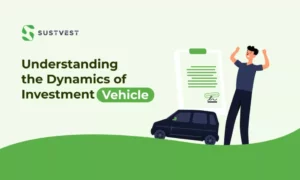Welcome to the fast lane of India’s auto sector, where innovation meets challenges head-on. As we buckle up for this thrilling ride, join us in uncovering the root causes behind the roadblocks that have been hindering progress and growth in one of the world’s largest automotive markets. From regulatory hurdles to infrastructure deficiencies, we’ll delve into every bump on this journey towards finding sustainable solutions for a brighter future.
Introduction
With over 35 million vehicles being produced annually, India is currently the fourth-largest automobile market in the world after China, the United States, and Japan. The industry comprises various segments such as passenger cars, commercial vehicles, two-wheelers, three-wheelers, and tractors. It also includes manufacturers of auto components and parts.
Current Challenges Faced by the Industry
The Indian auto sector has long been a major contributor to the country’s economy, with steady growth and consistent demand from both domestic and international markets. However, in recent years, the industry has faced significant challenges that have hindered its progress and jeopardized its future.
1. Slowdown in Demand
One of the main challenges plaguing the Indian auto sector is a significant slowdown in demand for vehicles. This can be attributed to various factors, such as an economic downturn, rising fuel prices, an increase in vehicle prices due to stricter emission norms, and changing consumer preferences towards shared mobility options. As a result, many manufacturers are facing declining sales and struggling to maintain their market share.
2. Lack of innovation
Another major challenge faced by the industry is a lack of innovation. While global trends are shifting towards electric and autonomous vehicles, the Indian market still relies heavily on traditional combustion engine cars. This lack of innovation can be attributed to limited R&D capabilities and the high costs associated with developing new technologies.
3. Infrastructural Challenges
The inadequate infrastructure in India is also a major hurdle for the auto sector’s growth. Poor road conditions, traffic congestion, and a lack of charging stations for electric vehicles make it challenging for manufacturers to expand their market reach and offer new products.
Analysis of Root Causes for These Challenges
Introduction:
The Indian auto sector has been facing numerous challenges in recent years, leading to a decline in growth and profitability. In order to find effective solutions, it is crucial to identify and analyze the root causes of these challenges. In this section, we will delve deeper into the underlying factors that have contributed to the current state of the Indian auto industry.
1. Economic Slowdown:
One of the primary reasons for the challenges faced by India’s auto sector is the country’s economic slowdown. The GDP growth rate has been declining over the past few years, resulting in a decrease in consumer spending power. This has directly impacted the demand for vehicles, leading to a decline in sales. Additionally, high interest rates and inflation have also made it difficult for consumers to afford new vehicles, further adding to the slowdown.
2. Changing Consumer Preferences:
The preferences of Indian consumers have undergone a significant shift in recent years. There has been a growing demand for more technologically advanced and fuel-efficient vehicles with better safety features. However, many automakers were slow to adapt to these changing trends, resulting in a gap between consumer expectations and available offerings.
3. Lack of Innovation:
The lack of innovation within India’s auto sector is another key factor contributing to its challenges. While other countries have been investing heavily in research and development (R&D) to develop new technologies and products, Indian automakers have lagged behind in this area. This has led to a limited product portfolio with outdated technology and features compared to global standards.
4. Infrastructure Limitations:
India’s inadequate infrastructure, particularly in terms of roads and public transportation, has also affected the auto sector. Poor road conditions and inadequate public transport systems make it challenging for people to travel, leading to a lack of demand for personal vehicles. Additionally, the lack of charging infrastructure for electric vehicles is hindering their adoption in the country.
5. Policy Changes and Uncertainty:
Frequent changes in policies and regulations related to the auto industry have also impacted its growth. For instance, the introduction of BS-VI emission norms has required manufacturers to invest significantly in upgrading their technology, resulting in higher costs and delays in product launches. The implementation of the Goods and Services Tax (GST) has also caused disruptions, with many automakers experiencing confusion regarding tax rates for different vehicle segments.
6. Competition from Foreign Players:
The Indian auto industry is facing tough competition from foreign players who have entered the market with advanced technology and a range of products that cater to changing consumer preferences. This has put pressure on domestic players to improve their offerings while also contending with lower prices offered by foreign competitors.
Conclusion
While the Indian auto sector continues to face challenges, it is heartening to see various stakeholders actively working towards finding solutions. By addressing issues such as infrastructure, skilled labor, and government policies, the Indian auto industry can reach its full potential and become a global leader.



































